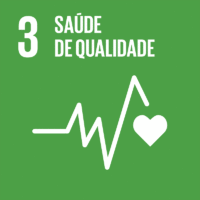Ciência_Iscte
Publicações
Descrição Detalhada da Publicação
Título Revista
BMC Public Health
Ano (publicação definitiva)
2022
Língua
Inglês
País
Reino Unido
Mais Informação
Web of Science®
Scopus
Google Scholar
Esta publicação não está indexada no Google Scholar
Esta publicação não está indexada no Overton
Abstract/Resumo
Background: COVID-19 is a pandemic of unprecedented proportions in recent human history. To date, the world has paid a high toll in terms of human lives lost, and on economic, financial, and social repercussions. In Europe, countries tried to mobilize all resources available to contain the COVID-19 effects, but the outcomes are diverse across countries. There have also been massive efforts geared towards finding safe and effective vaccines and to distribute them massively to the population. The main objective of this paper is to describe the COVID-19 prevalence in Europe. Secondly, it aims to identify epidemiological typologies allowing to distinguish the countries in terms of their response to the pandemic, and finally assess the effect of vaccination on pandemic control.
Methods: The study covers 30 European countries: EU 27 in addition to Norway, Switzerland, and United Kingdom. Four epidemiological variables are analyzed at two distinct moments, at the end of 2020 and at the beginning of
2022: total number of cases per million, total number of deaths per million, total number of tests per thousand, and case fatality rate. In a second step, it uses a fuzzy approach, namely archetypal analysis, to identify epidemiological
typologies, and positions countries by their response to the pandemic. Finally, it assesses how vaccination, stringency measures, booster doses and population age affect the case fatality rate, using a multiple regression model.
Results: The outcomes unveil four epidemiological typologies for both periods. The clearest sign of change in the two periods concerns the case fatality rate that is found to be low in a single typology in 2020 but occurs in three
typologies in 2022, although to different degrees. There is also statistical evidence of the positive impact of the primary vaccination on mortality reduction; however, the same does not hold for the booster dose and stringency measures.
Conclusions: The study shows that primary vaccination is the most effective measure to reduce mortality by COVID-19 suggesting that vaccination provides hope for an end to the pandemic. However, a worldwide access to
vaccination is needed to make this happen.
Agradecimentos/Acknowledgements
--
Palavras-chave
COVID-19,Pandemic,Vaccination,Fuzzy analysis
Classificação Fields of Science and Technology
- Outras Ciências Médicas - Ciências Médicas
Registos de financiamentos
| Referência de financiamento | Entidade Financiadora |
|---|---|
| UIDB/00315/2020 | Fundação para a Ciência e a Tecnologia |
Contribuições para os Objetivos do Desenvolvimento Sustentável das Nações Unidas
Com o objetivo de aumentar a investigação direcionada para o cumprimento dos Objetivos do Desenvolvimento Sustentável para 2030 das Nações Unidas, é disponibilizada no Ciência_Iscte a possibilidade de associação, quando aplicável, dos artigos científicos aos Objetivos do Desenvolvimento Sustentável. Estes são os Objetivos do Desenvolvimento Sustentável identificados pelo(s) autor(es) para esta publicação. Para uma informação detalhada dos Objetivos do Desenvolvimento Sustentável, clique aqui.

 English
English


